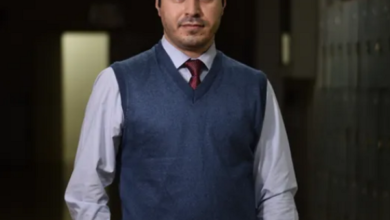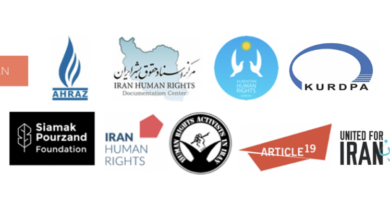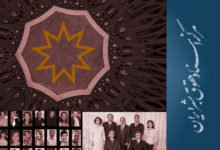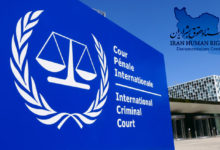“The 1988 Executions Had Been Planned Months Before”
August 28, 2009 Parsa Pilton
On the twenty-first anniversary of the execution of the Islamic Republic’s opponents, the Iran Human Rights Documentation Center announced in a report that the 1988 massacres had been planned months before Ayatollah Khomeini issued a fatwa against these individuals.
In a report titled Deadly Fatwa: Iran’s 1988 Prison Massacres, the Iran Human Rights Documentation Center alleges that documents and information primarily acquired from interviews of survivors and families of victims executed in 1988 indicate that preparations to kill Ayatollah Khomeini’s remaining opponents had been made months before the summer military incursion by members of the Mojahedin-e Khalq from Iraq twenty-one years ago.
Deadly Fatwa reaches publication at a time when Ayatollah Khamenei, the current Supreme Leader of the Islamic Republic and the president of Iran during the 1988 executions, has acknowledged the commission of crimes in the aftermath of the recent elections. Opponents of the Iranian regime, however, claim that these crimes pale in comparison to those which were secretly carried out inside Tehran and other city prisons during the past two decades.
The Iran Human Rights Documentation Center, which is based in the United States, believes that what distinguishes the 1988 summer executions from previous and later acts of violence is the “systematic way in which it was planned and carried out, the short time period in which it took place throughout the country, the arbitrary method used to determine victims, the sheer number of victims, and the fact that the regime took extensive measures to keep the executions secret and continues to deny that they took place.”
The Iran Human Rights Documentation Center says that the Iranian regime was well aware of the fact that the executions violated international laws and would severely damage the Islamic Republic’s reputation on the world stage. For this reason, the regime made every effort to ensure that information inside the prisons would not leak to the outside world.
Despite having conducted numerous interviews with survivors and families of victims, the authors of this 116 page report have not been able to determine the exact number of those executed. Last year, Amnesty International placed the number at around 5,000. The Iran Human Rights Documentation Center asserts that as long as the Iranian government fails to expose the truth, no one can have a truly accurate account of the events that occurred twenty-one years ago.
The Historical Record
Deadly Fatwa is divided into six major sections.
The first section presents the political affiliations and memberships of the victims. The second section discusses the issuing of Khomeini’s July 1988 order (or fatwa) aimed at the immediate destruction of the “enemies of Islam,” and the opposition of Ayatollah Montazeri, his successor at the time.
The third section discusses preparations undertaken by Iranian security and judicial authorities for the implementation of the massacres in the months preceding the killings. This section is followed by a description of the interrogations, tortures and executions as recounted by survivors and family members of the victims.
The fifth section of the report condemns the regime’s improper treatment of the remains of the executed and the victims’ families. Finally, the last section discusses the reasons why these killings violate international human rights laws.
The authors of Deadly Fatwa argue that even though the executions began after Ayatollah Khomeini issued his order in July 1988, the planning for the killings had actually begun in late 1987.
The roots of this tragedy have been traced to differences between radicals such as Mohammad Reyshahri (the Minister of Intelligence at the time) and Asadollah Lajevardi (the Prosecutor of the Revolutionary Court at the time), and Ayatollah Montazeri who defended his generous treatment of prisoners in the interest of diminishing prison overcrowding.
Quoting a former prisoner, the Iran Human Rights Documentation Center writes that from December 1987 interrogations at Gohar Dasht prison became more violent, and interrogators asked prisoners whether they were willing to provide confession letters.
This report alleges that prisoners were divided into three groups—red, yellow and white—depending on whether they were willing to repent or not, and whether they would abandon their political affiliations. Red prisoners were not willing to submit under any circumstances, while white prisoners showed the greatest amount of flexibility.
Members of the Mojahedin-e Khalq were, for the most part, kept separate from Leftist and Marxist prisoners so one group would have little information regarding the other’s circumstances.
One former prisoner told the authors of Deadly Fatwa: “It was with these arrangements that Khomeini’s regime prepared itself for the creation of a bloodbath and the massacre of political prisoners.”
According to former prisoners confrontations between prisoners and guards increased in the months prior to the 1988 executions.
In the report prepared by Iran Human Rights Documentation Center, a woman who was detained in Evin says: “The Pasdars informed our ward mates that things were happening … [They would say things like:] ‘We are telling you—none of you may come out of here alive.’ But we didn’t know if they were telling the truth or simply trying to scare us.”
The authors of this report assert that during the summer of 1988 the prisoners’ contact with the outside world was cut off, and that prisoners’ families were denied permission to contact the detainees, including tavvabs. Even sick prisoners were prevented from being transferred to the infirmary. Some prisoners also reported that access to televisions and newspapers was taken away after the Iranian regime accepted U.N. Resolution 598 in July.
The Death Commission
The military attack against Iran by the Mojahedin-e Khalq took place on July 25. On July 30, Ayatollah Khomeini issued his order (or fatwa) calling for the massacre of this group’s members.
Part of the order credited to Ayatollah Khomeini (which has been published in Ayatollah Montazeri’s memoirs) reads: “[T]hose who remain steadfast in their position of nifaq in prisons throughout the country are considered to be muharib (waging war on God) and are condemned to execution. The task of deciding the matter in Tehran is with the majority vote of misters Hojjatolislam Nayyeri (the religious judge) and his Excellency Mr. Eshraghi (prosecutor of Tehran) and a representative of the Intelligence Ministry, even though unanimity is preferable. Likewise, in prisons in provincial capitals, the majority views of the religious judge, the revolutionary prosecutor or assistant prosecutor, and the representative of Intelligence Ministry must be obeyed. It is naïve to show mercy to muharibin.”
Such was the genesis of the body which prisoners termed the “Death Commission.” Members of the Commission were responsible for interrogating prisoners and asking them questions such as: Are you ready to fight against the Mojahedin-e Khalq and alongside the forces of the Islamic Republic, or condemn this group in front of television cameras?
The authors of Deadly Fatwa write that a simple “no” was enough to execute a prisoner. According to this report, some of the members of the Death Commission deceived the prisoners into thinking they were part of an amnesty commission that had come to set them free.
Later, another fatwa was issued by Ayatollah Khomeini aimed at destroying remaining opponents of the Islamic Republic, especially Leftists who were not involved in armed resistance.
The report continues to analyze the role of individuals such as Mostafa Pour-Mohammadi (former deputy Minister of Intelligence), Ebrahim Raissi (former deputy Prosecutor of Tehran), and Esmail Shushtari (former head of the State Prisons Organization) in the executions.
Deadly Fatwa also recounts the daily experiences of former prisoners from various other cities.
Finally, the authors of the report conclude that the “shocking tale of brutality” associated with the 1988 executions suggests “crimes against humanity.”
They maintain that the lessons drawn from these events must never be forgotten, and that the perpetrators and instigators of these killings must be brought to justice.
Despite the recent show trials of those protesting the results of the June presidential elections, the Iran Human Rights Documentation Center expresses hope that Iranians will be empowered to put an end to the culture of impunity and strengthen the rule of law inside Iran.









